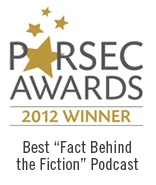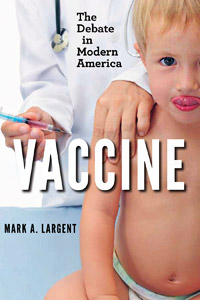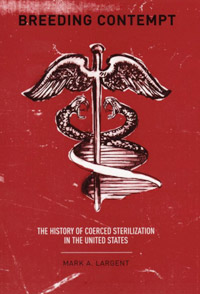In this week’s eSkeptic:
Announcing the New Season
of Lectures at Caltech
Please note important policy and pricing changes below. Review them now.
SINCE 1992, the Skeptics Society has sponsored the Skeptics Distinguished Science Lecture Series at Caltech: a monthly lecture series at the California Institute of Technology in Pasadena, CA. Most lectures are available for purchase in audio & video formats. Watch several of our lectures for free online. So, mark your calendars!

Born Together-Reared Apart:
The Landmark Minnesota Twin Study
Sunday, September 16, 2012 at 2 pm
Baxter Lecture Hall
“The Minnesota Study of Twins Reared Apart” startled scientists by demonstrating that twins reared apart are as alike, across a number of personality traits and other measures, as those raised together, suggesting that genetic influence is pervasive. Dr. Nancy Segal, a professor in the Department of Psychology at California State University, Fullerton, and the director of the Twin Studies Center, offers an overview of the study’s scientific contributions and effect on public consciousness. Dr. Segal is an associate editor of Twin Research and Human Genetics, the official journal of the International Society for Twin Studies.
Followed by…
- DR. CHRISTOPHER BOEHM
Moral Origins: The Evolution of Virtue, Altruism, and Shame
Sunday, September 30, 2012 at 2 pm
Baxter Lecture Hall - DR. KEVIN DUTTON
The Wisdom of Psychopaths: What Saints, Spies, and Serial Killers
Can Teach Us About Success
Sunday, October 28, 2012 at 2 pm
Baxter Lecture Hall - DR. SEAN M. CARROLL
The Particle at the End of the Universe: How the Hunt for the Higgs Boson
Leads Us to the Edge of a New World
Sunday, November 18, 2012 at 2 pm
Baxter Lecture Hall - DR. DONALD YEOMANS
Near-Earth Objects: Finding Them Before They Find Us
Sunday, December 2, 2012 at 2 pm
Baxter Lecture Hall - DR. PAUL ZAK
The Moral Molecule: The Source of Love and Prosperity
Sunday, December 16, 2012 at 2 pm
Baxter Lecture Hall - DR. JARED DIAMOND
The World Until Yesterday: What Can We Learn from Traditional Societies?
Special date and location:
Saturday, January 5, 2013 at 2 pm
Beckman Auditorium - DR. W. PATRICK MCCRAY
The Visioneers: How a Group of Elite Scientists Pursued Space Colonies, Nanotechnologies, and a Limitless Future
Sunday, January 20, 2013 at 2 pm
Baxter Lecture Hall
New Admission Policy
Due to security concerns, Baxter Hall will be locked and the audience will be admitted only through the doors on the South side of the building by the lily ponds. If, for medical reasons, you cannot climb the stairs to the hall on the 2nd floor, someone at the main entrance (located in the middle of the West side of the building) will escort you to the elevator. Get directions to the Caltech Campus, Baxter Hall and Beckman Auditorium.
New Prices for this Season of Lectures
Due to increasing costs, we are forced to raise our ticket prices to $10 for Skeptics Society members and the JPL/Caltech community, $15 for nonmembers. Tickets for all Baxter Lecture Hall events are sold on a first come, first served basis at the door. Seating is limited. Your admission fee is a donation that pays for our lecture expenses.
Service Charge on Phone/Fax Ticket Orders
For all tickets purchased by phone or fax for Beckman Auditorium lectures (for this season, this only applies to the Jared Diamond lecture on January 5, 2013), Caltech will add an $8 service charge per ticket order (no matter how many tickets are ordered). No service charge will be added to tickets purchased at the door on the day of the event or purchased in person at the Caltech ticket office in advance.

NEW ON MICHAELSHERMER.COM
Conspiracy Contradictions
Why do people who believe Princess Di was murdered also tend to believe she’s still alive? In Michael Shermer’s September “Skeptic” column for Scientific American, he explains why people who believe in one conspiracy theory are prone to believing in others. Read the entire article for free on michaelshermer.com!
NEW ON SKEPTICBLOG.ORG
Mystery UFO Photo
In this Skepticblog, Michael Shermer shares a letter and some photos of an unidentified flying object that he received from a reader.


NEW ON SKEPTICBLOG.ORG
The Long Road
Daniel Loxton returns from a family road trip to share a few thoughts about staving off skeptical burnout.

2012 Parsec Award Winner!
Best “Fact behind the Fiction” Podcast
The Parsec is an award given to support excellence in podcasting. It has been a regular feature of Dragon*Con since 2006. 2012 marked MonsterTalk’s third nomination and first win in the “Fact Behind The Fiction” category. MonsterTalk is honored to have been nominated and delighted to have won.
Get the MonsterTalk Podcast App
for Apple and Android Devices!
Get the MonsterTalk Podcast App (presented by Skeptic Magazine) and enjoy the science show about monsters on your handheld devices! Available for Android, iPhone, iPad, and iPod Touch. To get the app for iOS devices, download the free Podcast Box App on iTunes and then search for MonsterTalk within the Podcast Box app to listen to Monstertalk on your iPhone, iPad or iPod. For Android devices, simply install the stand-alone app.
Vaccine: The Debate in Modern America
Vaccines are one of science’s greatest achievements. Yet, fears and anxieties about immunization persist. In this week’s eSkeptic, Christian Orlic reviews Mark A. Largent’s new book Vaccine: The Debate in Modern America (2012, Johns Hopkins University Press, ISBN 978-1421406077).
Christian Orlic is currently pursuing a PhD in Evolutionary Biology at Michigan State University. He holds Bachelor of Science degrees in History of Science and in Zoology.
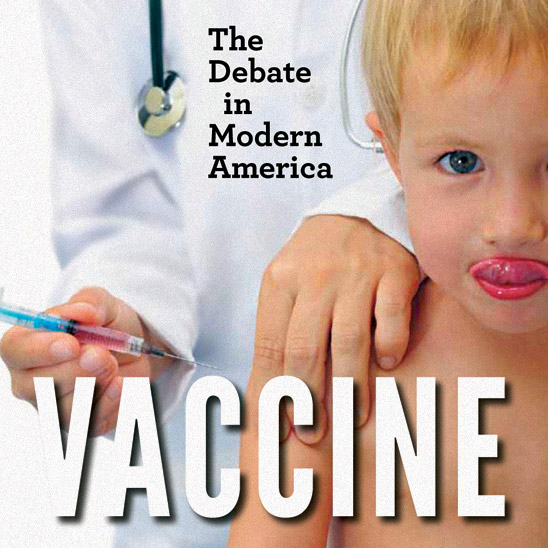
Engaging the Anti-vaxxers
a book review by Christian Orlic
On May 14, 1796, Edward Jenner developed and tested the first vaccine. He was able to protect people from smallpox by inoculating them with cowpox. Two centuries later vaccines have eradicated diseases and are often described as one of public health’s greatest achievements. According to the CDC vaccines have been highly successful and by 1996 there was 97.8% decrease in the incidence of rubella, diphtheria, haemophilus influenza type b, measles, mumps, pertussis, polio and tetanus (20).
Nevertheless, American parents appear to be more anxious than ever about vaccinating their children. Currently, American children receive at least 36 vaccinations before their sixth birthday. Some vaccines protect children and people against devastating communicable diseases that if when left unvaccinated would result in epidemics within communities. Nowadays about 40% of American parents chose to delay or refuse vaccinations for their children (15). Most of the children who have received no vaccines have slipped through the cracks: they are poor and have no insurance (20–40% of unvaccinated children). About 11.5% of American parents have “consciously refused” vaccines recommended by pediatricians, and about 23% have delayed some vaccines (32). Currently, all U.S. states allow vaccine exemptions for medical reasons, 48 states also allow children to be exempt for religious reasons, and some have even begun accepting philosophical objections.
Mark A. Largent is a historian of biology and director of Science, Technology, Environment, Public Policy (STEPPS) at Michigan State University. Largent’s previous book, Breeding Contempt, deals with the history of coerced sterilization in the United States. In Vaccine: The Debate in Modern America, Largent couples historical scholarship, keen cultural observations, and personal experiences in order to explore the American debate surrounding vaccination. Largent’s provocative but compelling argument suggests that the debate about the science, safety and efficacy of vaccination is a proxy for a set of unaddressed underlying anxieties regarding vaccines; therefore, science is not enough to resolve it, “no scientific finding and no agreement among physicians and scientists can possibly bring it [the debate] to an end” (173).
The book sets out to explore these anxieties and understand where and how they originated. Largent’s insightful observations provide ways in which the debate can be moved forward by addressing the anxieties parents have directly, rather than bickering about “simplistic stand-ins” (1). The anxieties that motivate the debate are over the number of vaccinations required, the diseases for which we vaccinate, the contents of vaccines, a perception that pharmaceutical companies care more about profits than safety, recent public health emergencies, fears over the long term effects of vaccinations, a belief that natural is better, as well as an overall frustration with the state of medical care. These underlying anxieties, Largent argues, must be addressed in order to continue enjoying high levels of vaccine compliance: “our continuing success in vaccinating children depends on whether the public has confidence in the scientists, doctors, and policy makers (including industry) who shape these programs” (136).
The current debate surrounding vaccinations is bipartisan, and those who oppose vaccines use both liberal and conservative arguments. The anti-vaccine movement was influenced by alternative medicine and recent events. For example, when AIDS was first described, Eva Lee Snead claimed it was linked to the polio vaccine (52). Some concerns about vaccines are and have been legitimate. When polio vaccines were first developed, kidney tissue from chimpanzees was used. In fact, this process was unsafe, and tens of millions of people were unintentionally infected with SV40 (53). The fears expressed by Snead were thus not unwarranted; if one virus could make the cross-species jump, others could too. Since then, however, studies have disproven the link between the polio inoculations and HIV. Likewise, the alleged link between Gulf War Syndrome and vaccines given to soldiers is now debunked. Largent concludes that both of these public health emergencies fed suspicions about the safety of vaccines.
The claim that vaccines were linked to autism emerged at the same time in the U.S. and in the UK. These claims could only emerge because “modern concerns about vaccines were already in place” (67). Largent may come off as too sympathetic to Dr. Wakefield and Jenny McCarthy, “the iconic vaccine-anxious parent” (139); however, I submit, that this is required for both good history and understanding. By at least momentarily embracing the views of those who opposed vaccination, we come to understand why they hold these views and how they developed them. Chapter 3 and 4 of Largent’s book explore how Wakefield and McCarthy came to believe that vaccines cause autism and how they became spokespeople for an already anxious community. Their rapid rise to celebrity within their community supports the assertion that British and American parents were already anxious. Therefore, it should not surprise observers “how easily they adopted an explanation that was critical of the modern vaccine schedule” (73). The alleged link between thimerosal and autism, as well as that of the MMR vaccine with digestive problems resulting in developmental problems, provided “a ready-made venue for discussing their concerns about vaccines within a group of like-minded advocates”(12). While Largent recognizes that there is no evidence to support either Wakefield or McCarthy claims, he thinks that their outright dismissal is detrimental to maintaining high levels of vaccine compliance.
Largent argues that by ignoring the underlying anxieties, public health officials and vaccine advocates have misconstrued the reasons parents chose not to vaccinate, or to delay vaccination. Secondly, public health officials prefer to discuss the efficacy and safety of vaccines because this is within their professional realm. Vaccine advocates often claim that ignorance is one of the reasons parents are anxious about vaccinating their children. They claim that this refusal to vaccinate is predicated by an ignorance of the severity of the diseases for which vaccines protect. Whereas, data demonstrates that the more educated parents are the more likely they are to have reservations about the recommended vaccine schedule (34). These parents for the most part are making conscious, non-religious, decisions to refuse or delay vaccinating their children. Further antagonizing them rather than addressing underlying anxieties is likely to reduce vaccine compliance.
One of the most important observations made by Largent is that not all vaccines are the same. Some vaccines protect against devastating diseases (MMR, DPT), others protect against dangerous ones (Hep A, Hep B, Hib, rotavirus, PCV) but the likelihood that an infant may be exposed to these is low, and other vaccinations provide protection against diseases with extremely low mortality rates (chickenpox). The distinction between the diseases each vaccine protects from are often forgotten. For example, Largent argues that some of the diseases we vaccinate newly born babies against may be unnecessary, such as HepB, a disease that an infant could only “contract by having sex with an infected person or by sharing contaminated needles with an infected drug addict” could wait (2). Public health officials should keep in mind that it is preferable for children to be under vaccinated than not vaccinated at all. Unfortunately, the vaccine debate is polarized. Amanda Peet, who supports vaccination, referred to the parents of unvaccinated children as “parasites” (she later apologized). Recognizing that not all vaccines are equal could sooth the rhetoric of the debate and allow for a more fruitful discussion. Otherwise, parents who are anxious about the amount of vaccines or one specific vaccine may be pushed not to vaccinate at all. Failing to recognize the differences between different inoculations results in an all or nothing approach (167). ![]()
Skeptical perspectives on medicine, pseudomedicine, and medical controversies…
-
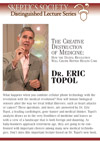 How the Digital Revolution
How the Digital Revolution
Will Create Better Health Care
by Dr. Eric Topol -
What happens when you combine cellular phone technology with the cellular aberrations in disease? Or create a bridge between the digital revolution with the medical revolution? How will minute biological sensors alter the way we treat lethal illnesses, such as heart attacks or cancer? These questions, and more, are answered by Dr. Eric Topol, a leading cardiologist, gene hunter and medical thinker. Topol’s analysis draws us to the very frontlines of medicine and leaves us with a view of a landscape that is both foreign and daunting.
-
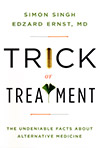 Trick or Treatment: The Undeniable Facts About Alternative Medicine
Trick or Treatment: The Undeniable Facts About Alternative Medicine
by Simon Singh & Edzard Ernst -
There is no alternative medicine; there is just scientific medicine and everything else that has yet to be tested. This book is an excellent guide to the confusions and contradictions of alternative medicine written with clarity, integrity and authority. What works? Who can you trust? What alternative cures have positive results? What medical authorities are included in their “Top ten culprits in the promotion of unproven and disproven medicine?” Includes extensive information on the big four: acupuncture, homeopathy, herbs, and chiropractic, plus a “Rapid guide to Alternative Therapies.” Not just a great read, but also a vital reference source on where to turn when disease or illness strikes you or someone you know, to get the straight facts about what science really has to say on the subject.
-
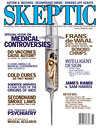 Medical Controversies
Medical Controversies
Skeptic Vol. 13 No. 3 -
In this issue: Mercury Rising: Exposing the Vaccine-Autism Myth; Science & Secondhand Smoke: The Need for a Good Puff of Skepticism; Clearing the Air: What Does Science Really Say About Secondhand Smoke?; The Trouble with Psychiatry; Animals & Medicine: Do Animal Experiments Predict Human Responses?; Contested Testimony in Scientific Disputes: The Case of the Origins of AIDS; Blind or Double Talk?: Reading Medical Research with a Skeptical Eye…
-
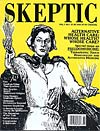 Pseudomedicine
Pseudomedicine
Skeptic Vol. 3 No. 1 -
In this issue: Therapeutic Touch: Skeptics in Hand-to-Hand Combat Over the Latest New Age Health Fad; Homeopathy: A Position Statement by the National Council Against Health Fraud; Spiritual Belief Systems Compete as Alternatives to Scientific Health Care …



